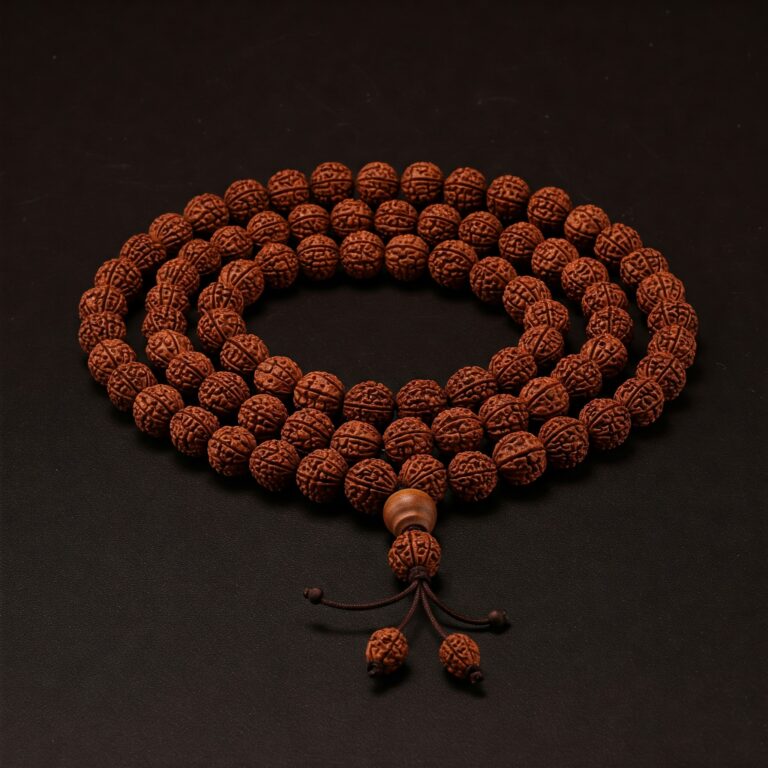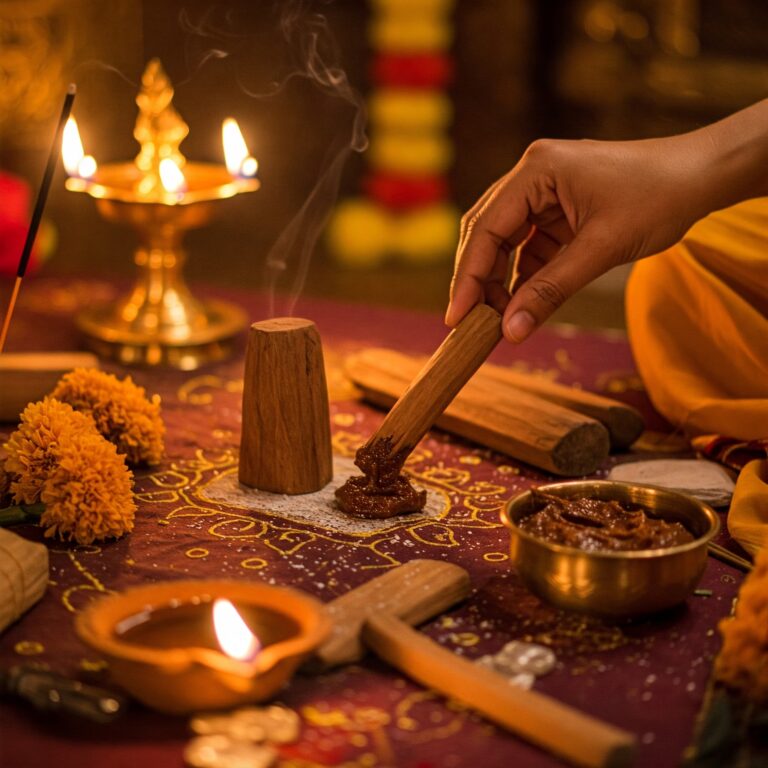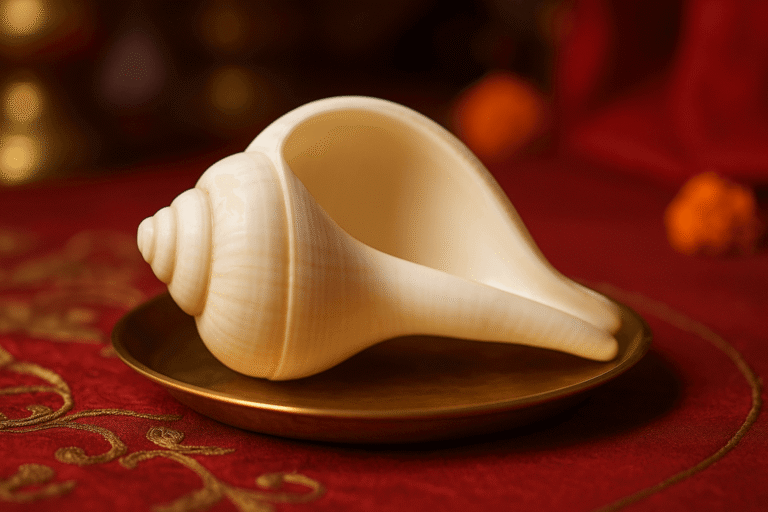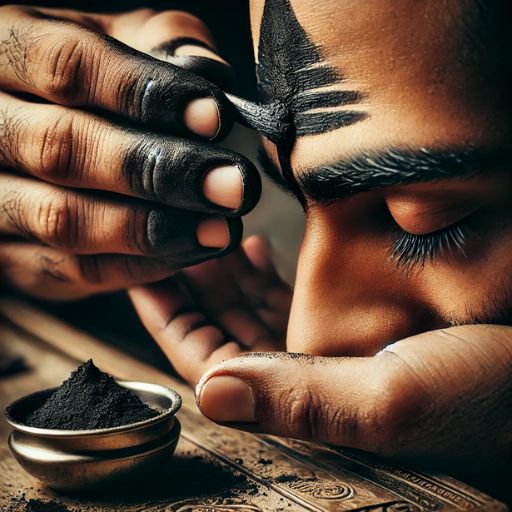Sandalwood, with its rich, soothing aroma and timeless appeal, holds a revered place in Indian culture. For thousands of years, it has been more than just a fragrant wood— it’s been a symbol of purity, spiritual upliftment, and divine connection. From sacred ceremonies to daily worship, sandalwood has played a crucial role in the spiritual and cultural fabric of India.
In this article, we delve into the fascinating history of sandalwood in Indian rituals, tracing its origins, significance in ancient scriptures, religious use, and how it continues to inspire devotion and wellness even today.
Origins of Sandalwood in India
Sandalwood, known as Chandan in Sanskrit, is derived primarily from the Santalum album tree, native to the Indian subcontinent. Historical records suggest that India has been the largest producer of sandalwood for centuries. Tamil literature from as early as the 3rd century BCE references sandalwood in poetry and medicine.
Buy CHANDAN ACCESSORIES from MAYAPURI at best prices
The southern states of Karnataka and Tamil Nadu were traditionally known for producing the best quality chandan, thanks to the favorable climate and rich soil. Over time, the tree gained sacred status not just for its scent but for its myriad spiritual and healing properties.
Sandalwood in Ancient Indian Scriptures
Sandalwood has been glorified in the Vedas and Puranas, where it’s considered cooling, calming, and spiritually uplifting. In the Rigveda, chandan paste is mentioned as a medium to purify the body and mind. It was applied to the forehead to activate the Ajna chakra, or the third eye, which is associated with intuition and higher wisdom.
In Ayurvedic texts like the Charaka Samhita, chandan is praised for its ability to balance the body’s doshas, especially pitta (heat). It’s believed to have antiseptic, anti-inflammatory, and healing properties.
Ritual Use in Hinduism and Spiritual Practices
Sandalwood plays a vital role in Hindu rituals and spiritual activities. It is often used in the following ways:
1. Chandan Tilak or Bhabuti
Devotees apply sandalwood paste as a tilak or tripundra (three horizontal lines) on the forehead. This is not merely a ritualistic practice—it has a cooling effect on the nervous system and signifies devotion and surrender to the divine.
2. Abhishekam and Idol Worship
During abhishekam (sacred bathing of deities), sandalwood paste is applied to idols of deities like Lord Vishnu, Krishna, Shiva, and Ganesha. The cooling nature of Chandan symbolizes the soul’s calm surrender before divinity.
3. Yagnas and Hawan
In fire rituals, powdered sandalwood is offered into the sacred fire. The smoke from burning sandalwood is said to purify the atmosphere and carry prayers to the heavens.
4. Funeral Rites and Cremation
In many Hindu traditions, sandalwood is used during the last rites. It is placed on the funeral pyre as it is believed to help the soul attain peace and moksha (liberation).

Role in Jainism and Buddhism
In Jainism, sandalwood is used during prayers and rituals, especially while worshipping the Tirthankaras. Monks and followers also apply sandalwood paste during meditation to stay calm and focused.
In Buddhism, sandalwood symbolizes the transformation of desire into enlightenment. It is commonly used in incense during meditation practices to enhance concentration and inner peace.
Cultural Importance and Traditional Uses
Beyond religious ceremonies, sandalwood has been deeply integrated into Indian daily life and customs:
-
Ayurveda and Natural Healing: Used in oils, balms, and powders to treat skin ailments, fevers, and mental stress.
-
Marriage and Festive Rituals: In traditional Indian weddings, sandalwood paste is used to adorn the bride and groom as a symbol of purity and auspiciousness.
-
Art and Craft: Ancient temples and palaces often used sandalwood carvings for their durability and fragrance.
-
Perfumes and Cosmetics: Sandalwood oil is still a prized ingredient in attars and ayurvedic beauty products.
Modern-Day Relevance
Despite deforestation and restrictions on harvesting, sandalwood remains a sought-after element in both spiritual and wellness sectors. Ethical sourcing and plantation sandalwood have made it more accessible for puja and holistic use.
Today, authentic sandalwood powders, pastes, incense sticks, and essential oils are used not only in homes and temples but also in spas and meditation centers across the globe.
At MAYAPURI, we proudly offer pure sandalwood powder that carries forward this ancient legacy. Sourced ethically and crafted with care, our sandalwood is ideal for puja, meditation, and skin care.
Conclusion
The story of sandalwood is deeply intertwined with India’s spiritual journey. From the sacred chants of the Vedas to the peaceful silence of a modern meditation room, the scent of sandalwood continues to guide souls toward tranquility and devotion. It is more than just a fragrance—it is a timeless symbol of sacredness and spiritual awakening.
Explore MAYAPURI’s authentic sandalwood collection and reconnect with the essence of Indian spirituality.
👉 Visit: www.mayapuri.store







